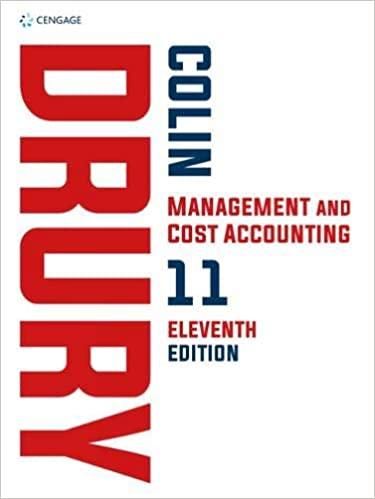Question
Consider a wireless local area network (LAN) with an access point and 10 stations (Station 1, Station 2, Station 3, , and Station 10). Distributed
Consider a wireless local area network (LAN) with an access point and 10 stations (Station 1, Station 2, Station 3, …, and Station 10). Distributed coordination function (DCF), which is based on carrier sense multiple access with collision avoidance (CSMA/CA), is implemented. There is no hidden station in the network. At time instant 0 microsecond, the channel becomes idle, and Station 1, Station 2, and Station 3 (each with one and only one DATA frame to be sent to the access point) start to contend for channel access, while other stations (including the access point) do not have data to send. The backoff timers of Station 1, Station 2, and Station 3 are 5, 5, and 18, respectively.
1) How long is the duration from time instant 0 microsecond to the time instant when the first successful transmission starts (i.e., when the corresponding transmitter sends the first bit of its RTS)?
2) How long is the duration from the time instant when the first successful transmission starts to the time instant when the second successful transmission starts?
3) How long is the duration from the time instant when the second successful transmission starts to the time instant when the third successful transmission starts?
Assume DIFS=50 microseconds; SIFS=10 microseconds; a backoff time slot=20 microseconds; RTS transmission time=CTS transmission time=ACK transmission time=100 microseconds; A DATA frame transmission time = 1000 microseconds. A TIMEOUT duration is equal to SIFS plus CTS transmission time. We also have the following assumption: if Station 1, 2, and 3 need to pick up a new backoff timer from their contention windows, they always pick up 5, 20, and 30, respectively.
Step by Step Solution
There are 3 Steps involved in it
Step: 1
Part 1 Duration until the first successful transmission starts Given Channel becomes idle at time 0 microseconds Stations 1 2 and 3 have backoff timers Station 1 5 Station 2 5 Station 3 18 DIFS 50 microseconds SIFS 10 microseconds Backoff slot time 20 microseconds RTSCTSACK transmission time 100 microseconds DATA frame transmission time 1000 microseconds Timeout duration SIFS CTS transmission time 10 100 110 microseconds Steps 1 Backoff calculation Each slot time is 20 microseconds Station 1 and Station 2 have a backoff time of 5 slots 5 20 100 microseconds each Station 3 has a backoff time of 18 slots 18 20 360 microseconds 2 First successful transmission scenario Since Station 1 and Station 2 have the same backoff time assume Station 1 transmits first 3 Duration until first successful transmission Stations 1 and 2 complete their backoff in 100 microseconds After backoff Station 1 waits for DIFS 50 microseconds and transmits RTS 100 microseconds CTS transmission follows 100 microseconds Total duration until first successful transmission 100 microseconds backoff 50 microseconds DIFS 100 microseconds RTS 100 microseconds CTS 350 microseconds Part 2 Duration from first successful transmission to second successful transmission Steps 1 New backoff calculation after first successful transmission Station 2 needs to pick a new backoff timer ...
Get Instant Access to Expert-Tailored Solutions
See step-by-step solutions with expert insights and AI powered tools for academic success
Step: 2

Step: 3

Ace Your Homework with AI
Get the answers you need in no time with our AI-driven, step-by-step assistance
Get Started


